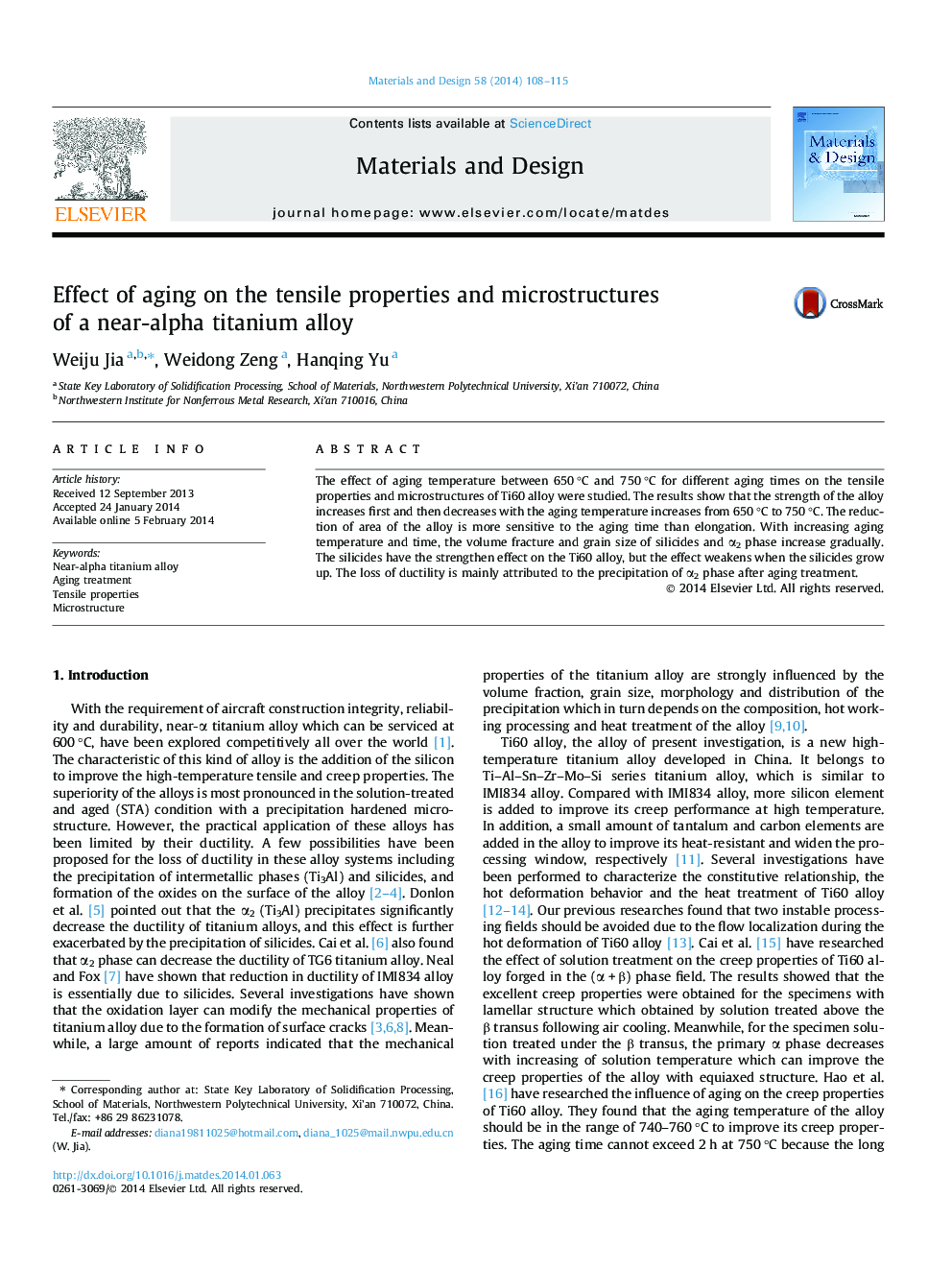| Article ID | Journal | Published Year | Pages | File Type |
|---|---|---|---|---|
| 829254 | Materials & Design (1980-2015) | 2014 | 8 Pages |
•The strength of the alloy increases first and then decreases with the aging temperature increasing.•With increasing aging time, the RA of the alloy continuous decreases at 650 °C.•The steady-state condition of RA can be reached after aging for 16 h and 8 h at 700 °C and 750 °C.•The loss of ductility is mainly attributed to the precipitation of α2 phase after aging treatment.
The effect of aging temperature between 650 °C and 750 °C for different aging times on the tensile properties and microstructures of Ti60 alloy were studied. The results show that the strength of the alloy increases first and then decreases with the aging temperature increases from 650 °C to 750 °C. The reduction of area of the alloy is more sensitive to the aging time than elongation. With increasing aging temperature and time, the volume fracture and grain size of silicides and α2 phase increase gradually. The silicides have the strengthen effect on the Ti60 alloy, but the effect weakens when the silicides grow up. The loss of ductility is mainly attributed to the precipitation of α2 phase after aging treatment.
